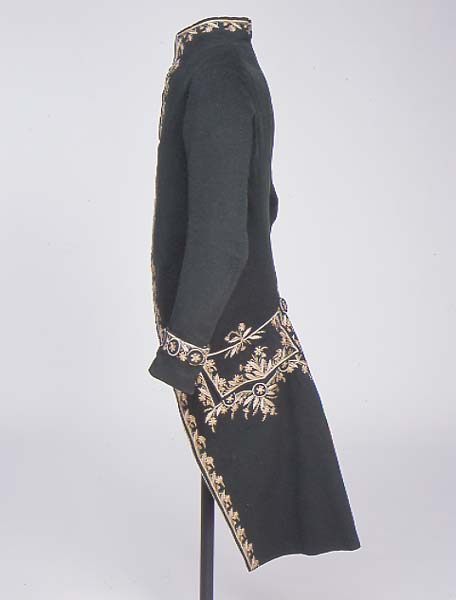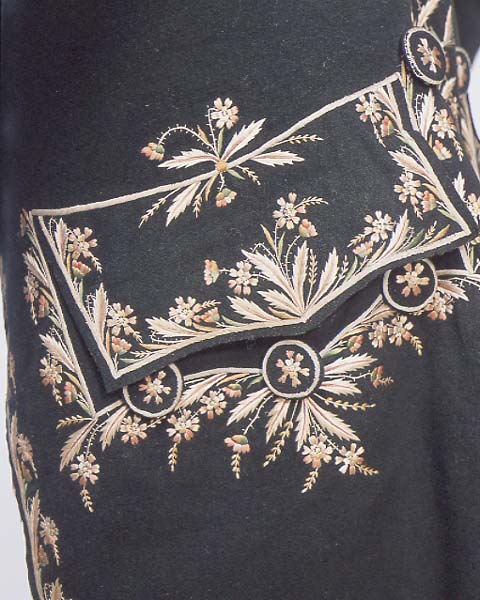coat
Summary
Very dark green facecloth coat with coloured embroidery in satin stitch in a leaf and flower design down fronts and at pockets, cuffs and vent. Back cut in 2 sections with a CB seam; standing collar; fronts fastening with 3 hooks and eyes; skirt with pleats CB and vent; sleeves with turn back cuffs; deep flapped pockets; 3 button holes and 10 embroidered buttons CF with 3 further buttons at pockets and cuffs and 1 at each side CB. Lined cream silk with much later repairing.
Display Label
The eighteenth century monied male was often a peacock, eager to display his taste and wealth, and fond of lavishly decorated or patterned fabrics, and bright striking colours. The usual outfit remained the three piece suit of coat, waistcoat and breeches until 1800, when trousers began to replace breeches. Fashionable suits were usually plain woollen facecloth for practical urban or rural wear; woven silks for more formal evening occasions; and highly trimmed and embroidered silk satins and velvets for court wear. Waistcoats were sleeved until the 1740s, then sleeveless as today, and they were often embroidered to match the coat. Looser banyans or gowns were worn for relaxing in the home, when the wig would be replaced by a comfortable "nightcap". Working men wore jackets and waistcoats of hard-wearing fustian (cotton and linen mix) or wool, with breeches of leather or later cheap cotton corduroy, "thicksett" or velveret.
Object Name
coat
Date Created
1770-1780
Dimensions
Length: 110cm
accession number
1951.56
Place of creation
England
Medium
Legal
© Manchester Art Gallery


